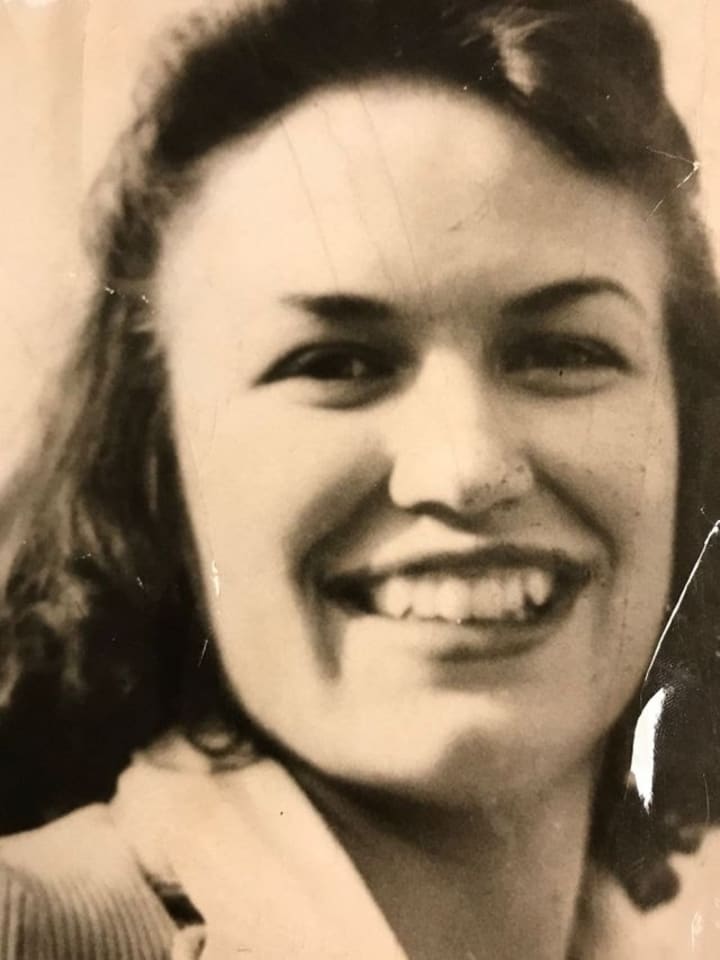The Bloody Truth (Pt. 6)
The Mad Dog Killer, Leslie Irvin

If you have ever been to Evansville, Indiana, you know there are some undeniable things that are specific to the city. You will notice there are stoplights at just about every intersection, earning Evansville the nickname of "stoplight city." It's obvious with a glance at the bumper stickers or t-shirts sported by most Evansville residents that the Indianapolis Colts reign supreme. The Frog Follies and The West Side Nut Club Fall Festival are known not just statewide, but worldwide. If one were motivated to look a little further, you would find that Evansville is also the home of some well-kept secrets that are hiding in plain sight
For instance, some of you may know that Evansville was originally dubbed McGary's Landing by its founder, Hugh McGary in 1812. In an effort to make McGary's Landing more appealing to land buyers, McGary changed the name in honor of Colonel Robert Morgan Evans to Evansville in 1814, but did you know that Hugh's wife, Mary, is buried under the parking lot of the old jail? Or that the project that thrust Indiana into bankruptcy, the Wabash and Erie Canal, fell into a state of disrepair and rather than repair it, the Old Courthouse was built on top of it? Wessleman's Woods and Nature preserve is both beautiful and holds the distinguished honor of being the largest uncut virgin forest inside the city limits of any city in the United States! The first World War I soldier to die in the conflict was Corporal James Bethel Gresham, a native of Evansville. Another first for Evansville is the case of Leslie Irvin, serial killer. It was a case that would change the course of judicial history and would rock the community and the nation to its center.
Unleashed

Mary Holland, Irvin's First Victim
December 2, 1954, Mary Holland started her shift at Bellemeade Liquors in Evansville at 5:30 PM. She and her husband, A.C. "Doc" Holland, co-owned the liquor store with Doc's father, and the three of them took turns running the store. Doc completed the shift he was working as assistant yardmaster at Louisville and Nashville Railroad, and stopped at the store to help his wife close for the evening. Doc entered the store and knew immediately that something wasn't right. An open bottle of Calvert's whiskey was on the counter and even more troubling, Mary's purse was laying on the floor, contents were strewn about and her wallet missing. Doc called his wife's name and moved quickly through the store in search of her. Doc's fears deepened as he looked in the bathroom at the back of the store. The lights were usually always on, but that night, he found the room dark. He almost missed her.
Thirty-three year old Mary Holland was behind the toilet in the bathroom, a single gunshot wound to her head and her hands tied behind her back. For two hundred and fifty dollars, someone had taken the life of his wife and, it was revealed, his unborn child. Mary was three months pregnant at the time of her death.
Irvin did what two wars couldn't.

Whitney Wesley Kerr (Photo Credit: Evansville Press)
Whitney Wesley Kerr was an Army veteran. He served his country and proudly fought through World War I and the Korean War. As a paratrooper during the Battle of the Bulge, his feet had become frostbitten and he was dangerously close to having both of them amputated. After healing for a while at home, Kerr married his love, Peggy, and started a family. The couple had two children when he reenlisted in the Army and was sent to the Pacific to fight on behalf of his country. Although the Army wanted Kerr to be on a demolition squad, he refused on the basis of his family, whom he always saw as his number one priority. He returned home, a man free of enlistment and further pay and searched for a job to support his growing family. He finally found a full-time position at the Standard Service Station at the corner of Fares and Franklin Avenues in Evansville. That's where Whitney Wesley Kerr was the night of December 23, 1954, the night he had the misfortune of meeting Leslie Irvin.
Irvin walked into the store, brandished a .38 caliber revolver and demanded money from Kerr. After getting what was in the register and the wallet of a terrified Kerr, Irvin tied his hands behind his back, marched him to the bathroom and shot him in the head, leaving the twenty-nine-year-old husband, father and war hero dead.
The Housewife and the Handgun

Only articles remain of Wilhelmina Sailer, Irvin's second victim. (Photo credit: Evansville Press)
The last time John Sailer of Mt. Vernon, Indiana, saw his wife alive was March 21, 1955. John and Wilhelmina had lunch together, and he kissed her good-bye as she was doing the post-lunch dishes, he on his way back to work. Everything was normal for the day. The house was cleaned. Laundry was done. Their seven-year-old son was in school. John had no worries as he went about his day.
Just a few hours later, the son of Wilhelmina Sailer would find her body laying on the living room floor, hands tied behind her back and a single gunshot wound to the head. A search of the house revealed Wilhelmina's purse was open and empty on the bed she shared with her husband, who had arrived home from work about five minutes after their son found his mother dead in the living room.
Chaos Across the Bridge

Collage of the victims with their killer, Leslie Irvin.
The first county across the massive twin bridges across the Ohio River that connect the State of Indiana with the Commonwealth of Kentucky, is Henderson County. Henderson County is a large county, encompassing twenty-nine cities, towns and neighborhoods, with much of it rural farmland. It's cities and towns a bit more laid back and slower than big-city life.
Fifty-one-year-old Goebel Duncan owned a one hundred fifty acre farm on Corydon-Smith Mills Road in Geneva, a town within the limits of Henderson County. His son, Raymond lived less than a mile from the elder Duncan, allowing easy access to the farm Goebel owned and additional land the family leased for farming. Raymond arrived at his Dad's house on the morning of March 28, 1955, exhausted and bleary eyed, but happy. Raymond and wife, Mary Alice had welcomed a baby boy in to the world just the evening before and Raymond intended to take his parents, along with his sister-in-law to see his new son. They would never make it to the hospital. The two men surprised Leslie Irvin as he was breaking in to the home of the senior Mr. Duncan. Pulling a .32 caliber pistol from his waistband, Irvin tied the men's hands behind their back and forced them in to their car. Irvin took the men four miles down the road and forced them to get out, shooting both men in the back of the head once.
Irvin drove the car back to the Goebel farm and was in the process, once again, of robbing the home when a car pulled in the drive carrying forty-nine year old Mamie Duncan, nineteen year old Elizabeth Greenwell Duncan (wife of the Duncan son, Dorris Ray) and Elizabeth's daughter, two year old Shirley Faye. The women entered the home for what would be the last time for Elizabeth. Once the women entered the home, he tied their hands behind their backs with a lamp cord, laid each on a bed in separate bedrooms and shot them once each in the back of the head.
A teenaged boy riding in a car on Trigg-Turner Road saw the bodies of the Duncan men beside the muddy marsh and notified local authorities. The officers arrived and made short order of identifying the men, as both were well-known and well-respected. With the intention of notifying Mary Ann of her husband's demise, a sheriff's deputy knocked on the door of Raymond's empty home. Mary Ann was still in the hospital, the baby still unnamed. The next stop was the senior Duncan's farm to notify Miss Mamie that Mr. Duncan wouldn't be coming home that night, or any other. A knock on the door of the home pushed the unlatched door open.
The deputy entered, gun drawn and found the still-breathing Mamie Duncan with her hands tied behind her back and blood pouring from the gunshot wound to the back of her head. Mamie would be blinded by the attack, but she lived through the ordeal. Elizabeth was found in another bedroom, face down on the bed. Her hands were tied firmly behind her back, a gaping hole in her head and her young daughter beside her. The officer watched the little girl rub her mommy's face and whisper in to an ear that no longer heard. The little girl with blonde hair hanging in ringlets over blue eyes, and clutching a stuffed rabbit she received as a birthday present just two months before softly explained to the shocked officer that, "Mommy is sleepy." The officer removed his jacket, wrapped it around little Shirley Faye, and carried her to his car and away from the death inside what was once a safe and secure home.
Leashed

Irwin is arrested in Yankeetown.
Eleven days after the triple homicide in Henderson County, Kentucky, teenager Allen Peerless, his brothers and some friends, were gathered on the porch of his parents home. They were boys being boys and talking about how, with the sketches and description of the car that neighbors had seen at the Corydon-Smith Mills Road triple murders of the Duncan family, they should just go find him themselves. The rowdy teenagers loaded in to a vehicle and set out to find themselves a killer. Imagine their surprise when soon after leaving the house, they spotted the car! Allen rushed home to tell his mother, who immediately contacted authorities.
Leslie Irvin was identified and arrested at his place of employment, the SIGECO plant in Yankeetown. Officers wasted no time when they saw Irvin, tackling him to the ground and taking him in to custody. What would follow in the courtroom would change the course of legal history forever.
April 15, 1955 the Evansville Police Department released Irvin's full confession. Just one month later he was transferred to the Gibson County Jail with the thought that the jail was fairly new (built in 1949) and was "escape proof." Indiana was tasked with trying the murders, with Kentucky in line for prosecution should a conviction fail in Indiana. He went to trial along side attorneys Ted Lockyear, Jr. and James Lopp in December of 1955. Lockyear and Lopp filed two motions for a change of venue and eight continuations during the trial, all of which were denied. January 9, 1956, Leslie Irvin was sentenced to die for the murders of Mary Holland and Wilhelmina Sailor. Nine days later, Irvin fashioned a key made from book covers and tin foil, unlocked his cell and walked out of the Gibson County Jail. He fled to Las Vegas, where he met Tim Williams' Orchestra pianist, Victor Davis. Davis assisted Irvin with a ride to Los Angeles, California. February 9, 1956, while attempting to pawn stolen jewelry in a San Francisco shop, Irvin was arrested. It was during the interrogation for the jewelry theft that the authorities were alerted of the escape from Indiana. Irvin was loaded in a car and delivered to Indiana State Prison in Michigan City, Indiana.
A stay of execution was granted January 9, 1957, and a whirlwind of activity was happening in the Supreme Court, where new attorneys Marion Rice and Jack Vanstone renewed the fight for the life of Leslie Irvin, now dubbed The Mad Dog Killer by the media because he was shackled hand and foot and led in to the courtroom with what appeared to be a chain dog leash. Attorney's argued that Irvin was not given a fair chance at a trial because pre-trial publicity made it impossible to seat a fair and unbiased jury. The Supreme Court agreed and gave Irvin a new trial in a landmark ruling that is still cited in law classes across the country today. Said Justice Tom Clark,
"With his life at stake, it is not requiring too much that the petitioner (Irvin) be tried in an atmosphere undisturbed by so huge a wave of public passion and by a jury in which two-thirds of the members admit, before hearing any testimony, to possessing a belief in his guilt."
The new trial would take place in Sullivan, Indiana. A place that appeared far enough removed from Evansville and Mt. Vernon that little, if any, of the case was common knowledge among the locals. The trial ended with the original guilty finding, but a change in the sentencing to life in prison with no possibility of parole.
Leslie Irvin led a quiet life inside the walls of the Indiana State Prison, a model prisoner. He was diagnosed with lung cancer in 1982 and died alone at Indiana State Prison.
About the Creator
Phoenixx Fyre Dean
Phoenixx lives on the Oregon coast with her husband and children.
Author of Lexi and Blaze: Impetus, The Bloody Truth and Daddy's Brat. All three are available on Amazon in paperback format and Kindle in e-book format.






Comments
There are no comments for this story
Be the first to respond and start the conversation.